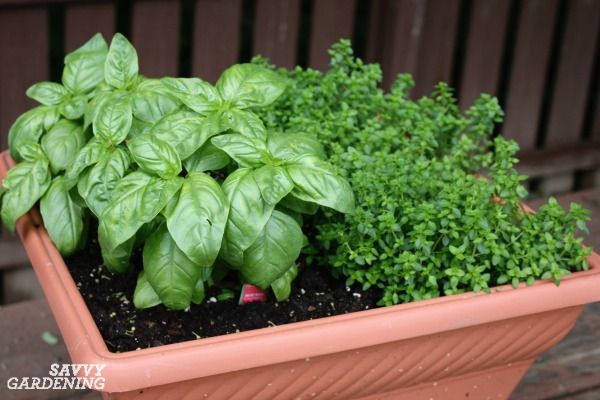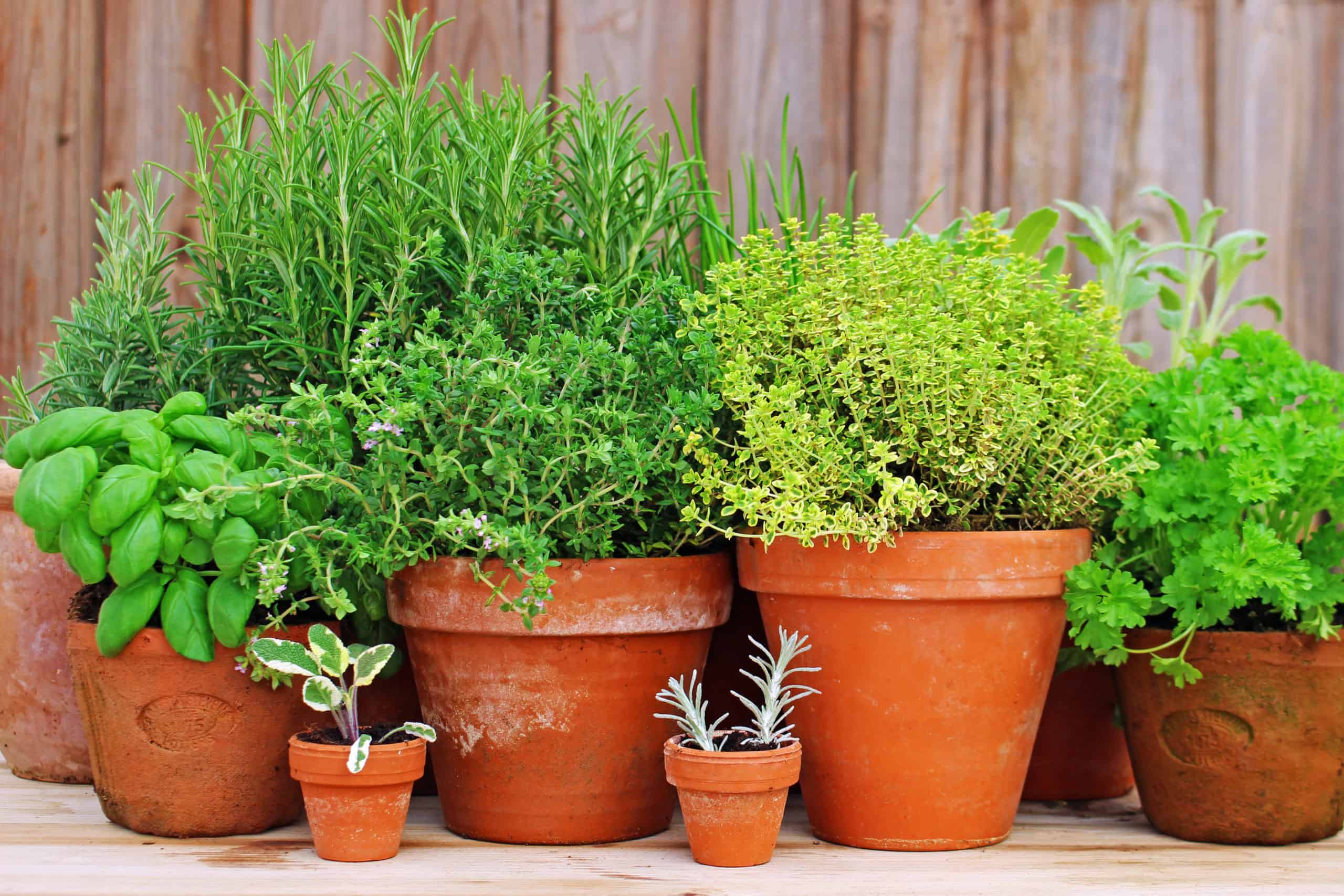
As long as the pot is big enough and has drainage holes in the base, herbs can thrive in any container. However, certain pots work better than others for growing herbs.
The ideal containers for growing herbs are those made of ceramic or terracotta. Twelve-inch-wide ceramic and terracotta pots do not dry out as quickly as plastic or metal pots, and they have enough soil in them to hold adequate moisture for herbs to flourish in full sun and to protect their roots from cold temperatures.
To choose the finest pot for growing herbs in your location, keep reading to learn about the important factors to take into account while planting herbs in pots.
Table of Contents
Best Pot Size for Herbs
All herbs grow well in pots because of the good drainage conditions. Herbs come in a variety of shapes and sizes, with annuals like dill and chives often remaining smaller and compact while certain cultivars of rosemary can reach several feet across at full maturity.
However, a pot that is 12 to 16 inches wide and a corresponding proportionate depth, which is suitable for all kinds of herbs, is the finest pot size for growing herbs.
This is due to the fact that the pot should be big enough to hold enough soil to retain moisture for the herbs to withstand high temperatures during the hottest part of Summer in direct sunlight and also for the soil to act as insulation during the coldest part of the year since the roots are the most cold-sensitive part of all herbs.
The roots of the herbs are more vulnerable to damage from cold or frost if the pot is too small in the winter.
Because some herbs love full light, the size of the pot and its ability to retain moisture are especially crucial. If the pot is too small, the herbs will be more susceptible to drought stress and withering.
A large pot with plenty of soil helps protect the roots from the worst of the Winter cold. Pots also raise the root system of herbs out of the ground, which might leave the roots vulnerable to frost damage if the container is too small.
Due to their acclimatization to the mild winters of the Mediterranean and consequently increased sensitivity to the cold, the Mediterranean herbs (lavender, rosemary, thyme, sage, and oregano) have a substantially higher chance of surviving the winter.
(For additional information on care for lavenders in winter, read my article.)
Best Potting Material for Growing Herbs

I have personally observed that herbs do nicely in pots made of metal, wood, plastic, terracotta, and ceramic.
However, in the sun, metal pots tend to heat up more quickly and absorb all the heat, as does plastic to some extent (especially if the plastic is dark in color).
Many herbs prefer to thrive in full sun, which can heat up the soil and the roots, causing the soil to dry up more rapidly and frequently causing drought or heat stress, which can quickly dehydrate and even kill green leafy annual herbs like cilantro, basil, mint, and dill.
Avoid using metal pots while growing herbs since even herbs native to the Mediterranean region of Europe, which are suited to drier soil, can still experience drought or heat stress if their roots overheat and begin to droop or wilt as a symptom of stress.
Wood retains moisture better than other types of pots, which is good for leafy herbs like basil, cilantro, mint, and dill (although drainage holes in the base are still crucial). However, Mediterranean herbs like lavender, rosemary, thyme, sage, and oregano do not do well in wooden pots because they prefer dryer soil conditions.
For the Mediterranean plants that have evolved to drought, wooden containers can hold too much moisture, increasing the danger of root rot (which can cause the leaves to turn yellow).
The ceramic or terracotta style pots are my particular favorites for growing herbs. Compared to metal or wood, these pots are much more resistant to the elements and weather.
The planters made of ceramic or terracotta are often much thicker than those made of metal or plastic. In order to preserve the herbs’ cold-sensitive roots, this means they won’t dry out as quickly in the summer and will resist frost a little better in the winter.
I advise growing herbs in a 12 to 16-inch terracotta or ceramic pot for optimal results, but keep in mind that these pots can be substantially heavier than metal or plastic ones.
Some perennial herbs, like lavender and rosemary, are not cold hardy and may need to be brought indoors over the winter to avoid frost damage.
If you need to transfer your pots indoors and outside every year, it can be challenging to do so with heavy ceramic and terracotta pots. In that case, perhaps a lighter pot would be preferable.
(Mediterranean herbs favor damp, slow-draining soil, whereas leafy annual herbs favor moist, fast-draining soil. To understand how to make the best potting mix for your herbs, see my post on the best potting soil for herbs.
Good Drainage in the Base of the Pot
The pot’s drainage holes in the base are its most crucial component for every herb plant. Without holes for drainage, water just pools at the bottom of the pot, soaking the soil and causing root rot, which causes the herbs to become yellow or brown and wither away.
It is equally crucial to keep the drainage holes free of compacted dirt or anything else that can prevent water from draining freely from the pot’s base.
To ensure that the surplus water may drain out the base of the pot freely and unhindered, add a layer of gravel or stones to the bottom of the pot that is 1 inch thick.
If you live in an area with heavy rainfall, placing the pot on decorative feet or small stands to lift it off the ground can allow water to drain readily and prevent it from pooling at the bottom of the container, allowing the soil to dry out between watering sessions (which is important if you are growing the drought adapted Mediterranean herbs).
(Read my post on how frequently to water herbs.)
Avoid Making This Common Error!
When growing herbs in pots, another error I find is selecting the proper sort of pot with drainage holes yet setting the pot in a tray or container to capture the runoff water. People frequently do this to stop water leaks and maintain the dryness of their patio.
Herbs should always be given a generous soak, with water trickling out of the bottom of the pot to promote healthy root growth and increase drought resistance.
The soil is overly moist and will encourage root rot, which will destroy your herbs if water collects in a tray underneath a pot of herbs.
(Read my post on how to bring back dead herbs.)
